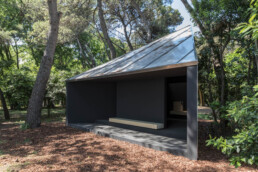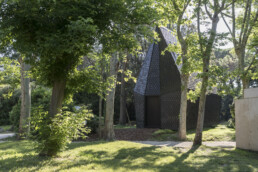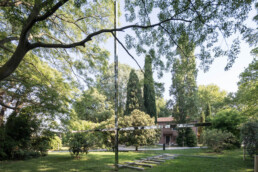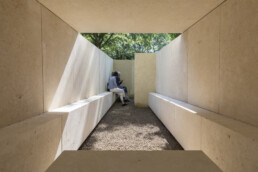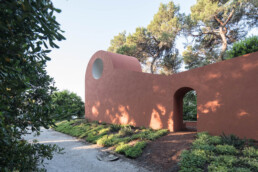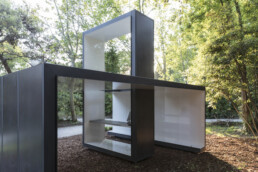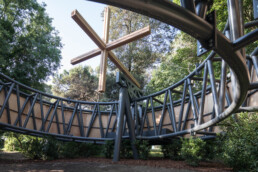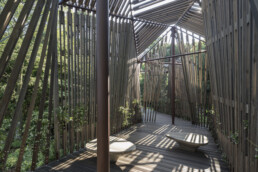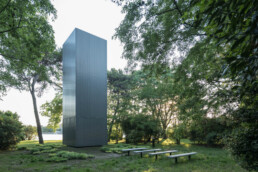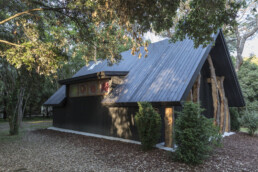A Must-Visit at the Venice Biennale: The Vatican Chapels
DATE
02.05.2025
Since 2018, the Holy See’s participation in the Venice Architecture Biennale has been one of the most distinctive and celebrated contributions to the exhibition.
For its debut, the Vatican chose a highly symbolic and spiritual intervention: the construction of a set of contemporary chapels in the gardens of the island of San Giorgio Maggiore—an exceptional location facing St. Mark’s Square and historically tied to great architecture through the presence of the church of the same name designed by Andrea Palladio. This initiative represented a profound reflection on the role of sacred space in contemporary architecture.
Curated by Francesco Dal Co, the project brought together some of the most renowned architects on the international scene, each of whom interpreted the concept of a chapel in a free and experimental manner. Among them were leading figures such as Norman Foster, Eduardo Souto de Moura, Carla Juaçaba, Smiljan Radić, Francesco Cellini, and the Catalan duo Flores & Prats. Each proposal offered a unique perspective, articulating different architectural languages and materials—from the lightness of open structures to the tectonic solidity of small secular temples immersed in nature.
The installation not only generated strong critical and media impact during its inaugural edition, but was also conceived with a sense of permanence. Unlike many of the temporary works typical of the Biennale, this group of chapels was integrated into the island’s landscape, becoming a permanent destination within Venice’s cultural circuit. This gesture of continuity is significant: it expresses a long-term commitment to dialogue between spirituality, art, and architecture in a place already steeped in centuries of history and beauty.
Today, the Vatican Chapels in San Giorgio Maggiore offer a unique spatial and emotional experience. Visiting each of them means embarking on a small introspective journey among trees, silence, and architectural forms that, despite their diversity, share the same intent of creating a space for reflection. The initiative has successfully bridged tradition and modernity, opening up new ways of thinking about sacred space and positioning the Holy See as a relevant voice in today’s architectural discourse.
MArch Valencia. Arquitectura y Diseño
© 2025 MArch Valencia. Arquitectura y Diseño
Privacy policy | Cookies policy | Terms of use



